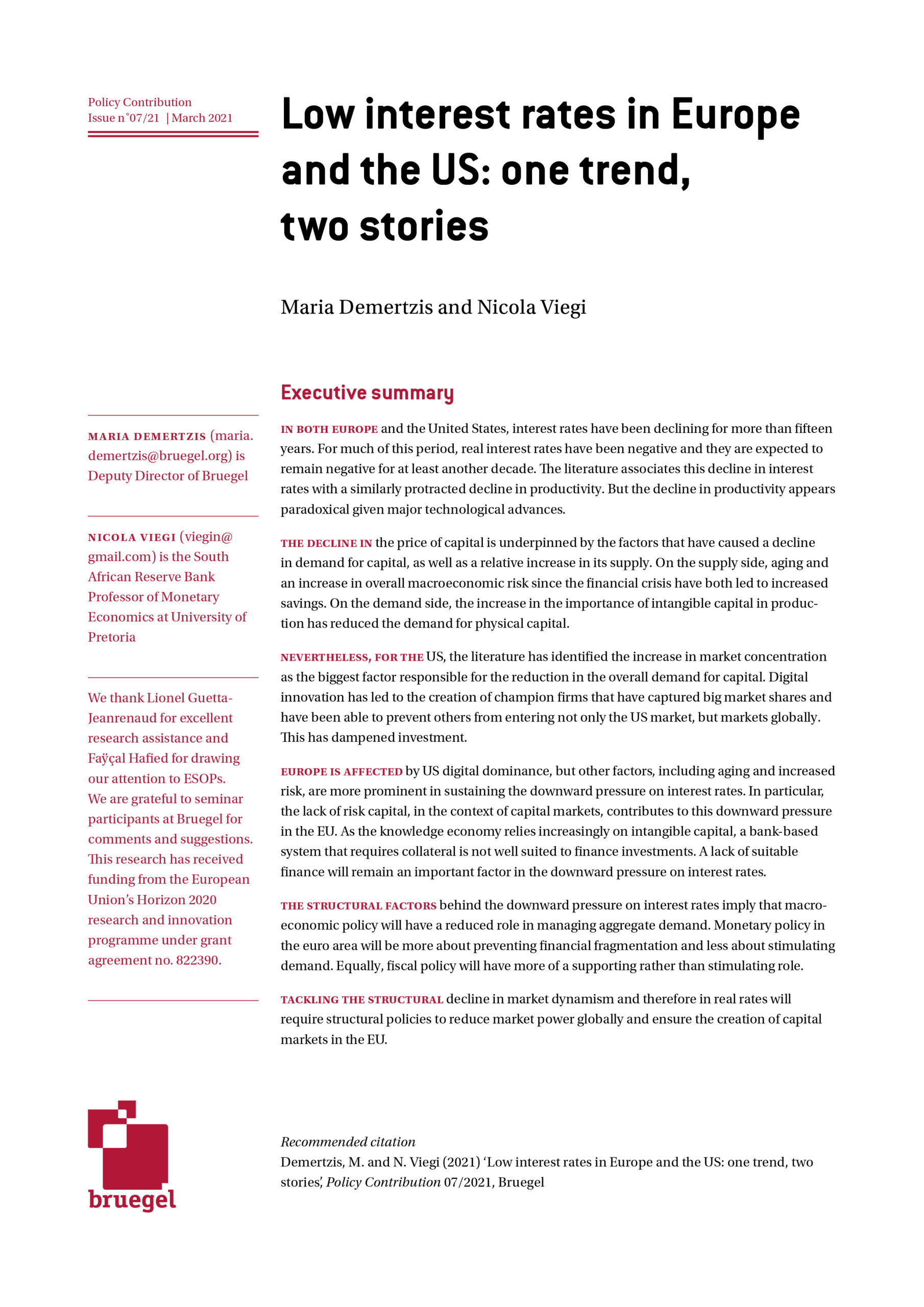Policy Contribution
Low interest rates in Europe and the US: one trend, two stories
Interest rates have been on a long-term decline, associated with declining productivity growth. To tackle this, the priorities are to reduce market concentration and, in Europe, change the financing model.
We thank Lionel Guetta-Jeanrenaud for excellent research assistance and Faÿçal Hafied for drawing our attention to ESOPs. We are grateful to seminar participants at Bruegel for comments and suggestions. This research has received funding from the European Union’s Horizon 2020 research and innovation programme under grant agreement no. 822390.
In both Europe and the United States, interest rates have been declining for more than fifteen years. For much of this period, real interest rates have been negative and they are expected to remain negative for at least another decade. The literature associates this decline in interest rates with a similarly protracted decline in productivity. But the decline in productivity appears paradoxical given major technological advances.
The decline in the price of capital is underpinned by the factors that have caused a decline in demand for capital, as well as a relative increase in its supply. On the supply side, aging and an increase in overall macroeconomic risk since the financial crisis have both led to increased savings. On the demand side, the increase in the importance of intangible capital in production has reduced the demand for physical capital.
Nevertheless, for the US, the literature has identified the increase in market concentration as the biggest factor responsible for the reduction in the overall demand for capital. Digital innovation has led to the creation of champion firms that have captured big market shares and have been able to prevent others from entering not only the US market, but markets globally. This has dampened investment.
Europe is affected by US digital dominance, but other factors, including aging and increased risk, are more prominent in sustaining the downward pressure on interest rates. In particular, the lack of risk capital, in the context of capital markets, contributes to this downward pressure in the EU. As the knowledge economy relies increasingly on intangible capital, a bank-based system that requires collateral is not well suited to finance investments. A lack of suitable finance will remain an important factor in the downward pressure on interest rates.
The structural factors behind the downward pressure on interest rates imply that macroeconomic policy will have a reduced role in managing aggregate demand. Monetary policy in the euro area will be more about preventing financial fragmentation and less about stimulating demand. Equally, fiscal policy will have more of a supporting rather than stimulating role.
Tackling the structural decline in market dynamism and therefore in real rates will require structural policies to reduce market power globally and ensure the creation of capital markets in the EU.
Recommended Citation
Demertzis, M. and N. Viegi (2021) ‘Low interest rates in Europe and the US: one trend, two stories’, Policy Contribution 07/2021, Bruegel









